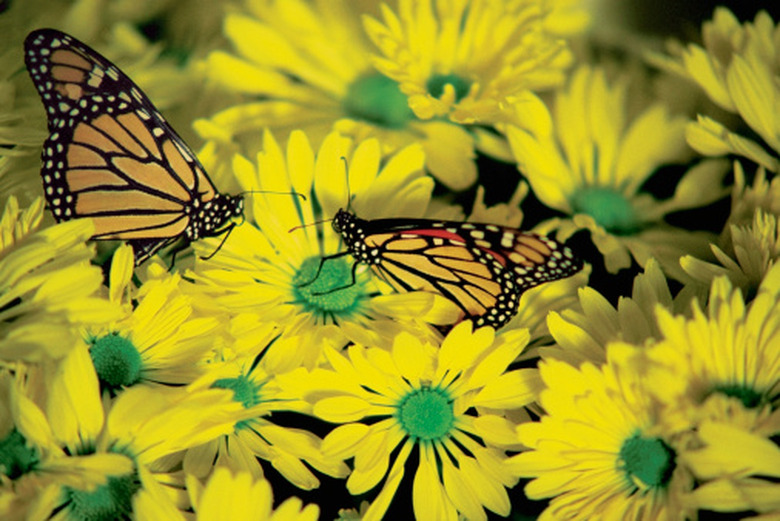How To Identify Yellow Daisy Flowers
Things Needed
- Tape measure or ruler
- Notebook
- Pencil
- Camera
Identifying a yellow daisy can present a challenge. Yellow daisies are Compositae — or Asteraceae — plants, belonging to an enormous plant family. More than 20,000 species of Compositae plants grow around the globe. Daisies' composite flower heads, with "ray" petals surrounding centers of tiny "disks," distinguishing them from plants of other families. Many daisies, however, have nearly identical blooms. Having a yellow daisy narrows your search. Examining its other traits will narrow it even more.
- Identifying a yellow daisy can present a challenge.
- Yellow daisies are Compositae — or Asteraceae — plants, belonging to an enormous plant family.
Step 1
Observe your daisy's rays. Measure their width and length with your ruler or tape measure. Some yellow daisies, like the pinnate prairie coneflower (Ratibida pinnata) have drooping petals. Count the rays. Some, like the coneflower daisies have as few as five. Swan River daisies (Brachyscome spp) may have 20 or more.
Step 2
Measure the daisy's height. Daisies come in all sizes. Cut-leaf coneflower (Rudbeckia lacianata) stands anywhere from 3 to 12 feet high, while Dahlberg daisies (Thymophylla tenuiloba) are 10-inch, ground-hugging plants.
- Observe your daisy's rays.
- Swan River daisies (Brachyscome spp) may have 20 or more.
Step 3
Note the daisy's leaf shape, color and texture. Some daisies have clasping leaves with based that partially or completely encircle their stems. While lobed foliage is typical, some varieties, like marguerite daisies have sharply toothed leaves. Gerbera daisy leaves are rounded. Leaves may have down on one or both surfaces. Colors range from pale, to grayish-, to blue- to dark green. Check bruised leaves for an aroma.
- Note the daisy's leaf shape, color and texture.
- Some daisies have clasping leaves with based that partially or completely encircle their stems.
Step 4
Study the daisy's stem. It may be smooth, downy, solid, hollow, upright or curving.
Step 5
Observe the daisy's shade of yellow, and if that color is consistent. Some yellow daisies are the color of school buses. Others are closer to lemons. Shasta daisy Broadway Lights opens deep yellow, progressing to pale yellow and finally to white.
Step 6
Note the time of year and length of the daisy's blooming season.
- It may be smooth, downy, solid, hollow, upright or curving.
- Some yellow daisies are the color of school buses.
Step 7
Watch for insects and birds pollinating or feeding on the daisy. Ox-eye, camphor and Shasta daisies are among those that attract butterflies. Camphor daisies also attract bees and — after setting seeds — birds.
Step 8
Record your observations in your notebook. Alternatively, use your camera to take a series of photographs of the daisy at different stages through the growing season.
Step 9
Take your observations or photos to your local county extension or a nearby plant nursery for help in identifying your yellow daisy.
